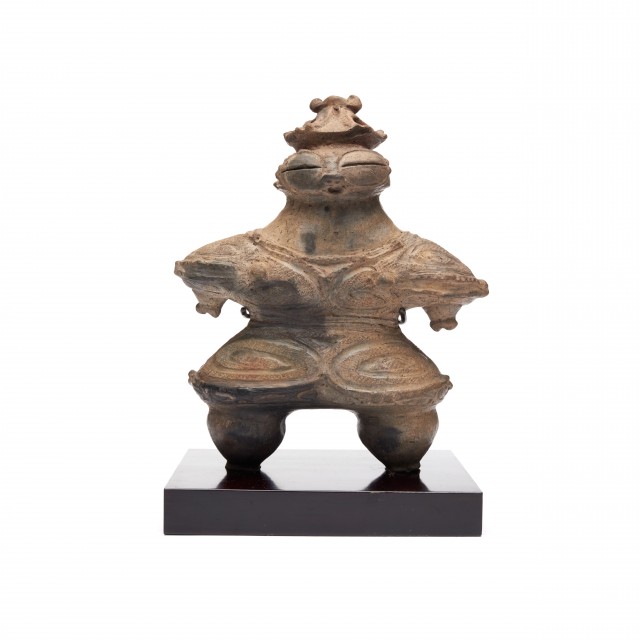
Female Figure

Photography by Synthescape, Digital image © Asia Society

Photography by Synthescape, Digital image © Asia Society
Female Figure
1000-300 BCE
Japan, Aomori Prefecture
Earthenware with traces of pigment (Kamegaoka type)
H. 9 7/8 x W. 8 1/2 x D. 5 1/4 in. (25.1 x 21.59 x 13.33 cm)
Asia Society, New York: Mr. and Mrs. John D. Rockefeller 3rd Collection, 1979.198
Licensing inquiries
Because of their prominent, bug-like eyes, sculptures like this are often called "clay figurine with snow-goggles" (shako dogu). Most likely, however, these statuettes signify the Jomon people's abstract representation of the human figure. The prominent breasts and wide hips of this female figurine make plausible its association with fertility, especially given the importance of fertility goddesses in other Stone Age cultures. The most recent theory proposes that, in fact, the female figurine, like most Jomon clay statuettes, were made and used for mystic-religious rites, in which the objects were purposely fractured and scattered in and around the village. Jomon-period objects, their shapes indicating different regional styles, have been uncovered in every region of modern-day Japan.


